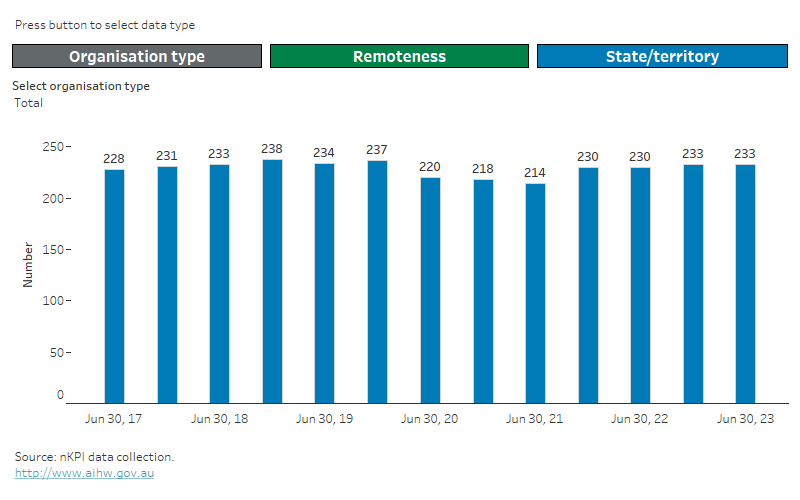nKPI – organisations
At June 2023, 233 organisations reported to the national Key Performance Indicators (nKPI) collection (Figure 1). Of these:
- 33% (or 77) were in Very remote areas, 21% (49) were in Inner regional areas, 20% (47) in Outer regional areas, 14% (32) in Remote areas and 12% (28) in Major cities
- 66% (or 153) were Aboriginal Community Controlled Health Organisations (ACCHOs), of which:
- 25% (or 39) were in Outer regional areas, 25% (38) in Inner regional areas, 22% (34) in Very remote areas, 16% (24) in Remote areas and 12% (18) in Major cities
- 34% (or 80) were organisations other than Aboriginal Community Controlled Health Organisations (non-ACCHOs), of which:
- 54% (or 43) were in Very remote areas, 14% (11) in Inner regional areas, 13% (10) in Major cities, 10% (8) in Outer regional areas and 10% (8) in Remote areas.
Figure 1: First Nations-specific primary health care organisations by reporting period

Note: For more information, including on interpreting changes over time, see Technical notes.
For more information on organisations see Data.


